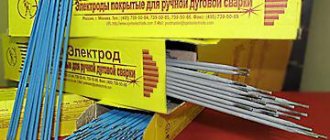The popularity of new models of light sources is explained by the need to reduce the consumption of energy resources. Energy-saving lamps are used in everyday life and are suitable for lighting the street, production workshop, educational and medical institutions. The efficiency of the mercury tungsten arc (mercury-mercury) lamp is ensured by the hybrid design of the light-emitting elements and the e40 base, which is compatible with mounts for conventional incandescent lamps.
Advantages and disadvantages
Mercury gas-discharge lamps are an electric light source, one of the types of gas-discharge models. Their work is based on the passage of an electrical discharge through a gaseous medium.
Important! To designate light sources of this type, the term “discharge lamp” or RL is used.
Mercury lamps are divided into:
- DRV (interpretation - arc mercury-tungsten);
- DRL (or arc mercury phosphor).
The advantages of direct switching lamps DRV include:
- Ease of connection, use and replacement: they can operate on 220 V AC power and do not require ballasts;
- When warmed up, the resistance increases and stabilizes the network voltage - even at low voltage the light will be stable;
- They can operate from different power sources;
- The light sources are both tungsten filament and fluorescent radiation, that is, cold and warm white colors are mixed. This allows you to get more even light;
- Low price.
- Low luminous efficiency. For example, the efficiency of Philips lamps does not exceed 30 lm/W, although other types of light bulbs from the same company have an output of up to 50 lm/W;
- A small selection of models: in stores there are only 5 models of different power;
- Short service life - no more than 3-4000 hours, and more often less. Replacement is quite expensive, this increases the final cost of the lamps.
What is a throttle for?
The choke for DRL lamps is used for starting; there are different types of lighting devices on the market in which it is used:
- Fluorescent and ultraviolet lamps.
All lighting devices have differences in the principle of obtaining luminous flux, there are other differences:
- different materials are used in their design;
- differ in the presence of chemical elements;
- inside the flasks there is pressure according to the own parameters of each lighting device;
- they differ in power and brightness of the light flux.
These types of lamps are united by the variable value of the starting current and resistance during the start-up process and further operation.
In order to limit the amount of operating current, different types of ballast are used in lighting devices of this type: electronic ballasts, ballasts and ballasts, which are inductor coils (chokes). At the moment of startup, each device of this type has a high resistance value; when the lighting device is ignited, a process of electrical breakdown occurs in the inert gas environment with which the lamp is filled (mercury or sodium vapor), and an arc discharge occurs.
During the process when the lamp is ignited, the ionized gas loses resistance from the arc discharge several tens of times, and for this reason the current increases and heat is released. If you do not limit the amount of current, it will instantly create a superheated gas environment, which will lead to breakdown of the lighting device and damage from the inside. To prevent this, a resistance (choke) is included in the lighting device circuit.
Physical parameters and connection diagram of the inductor
A DRL inductor connected in series has a reactance, the value of which depends on the inductor: one Henry passes one ampere of current when the voltage is one volt.
The parameters of the inductor include:
- square of copper wire used;
- number of turns;
- what is the core and cross-sectional size of the magnetic circuit;
- what electromagnetic saturation.
The inductor has an active resistance, which is always taken into account when calculating the ballast for each type of lighting device of this type, taking into account its power; the overall dimensions of the inductor depend on this.
Let's consider a simple circuit for switching on the ballast, when the design of the DRL lamp provides (additional) electrodes for the process of occurrence of a glow discharge that turns into an electric arc.
In this case, inductance limits the amount of operating current in the lighting device.
Ballast for fluorescent lamps
Structurally, a fluorescent lighting device uses a ballast choke for starting; new types of this lighting device use electronic ballasts, this is an electronic type of ballast. The purpose of this device is to contain the increasing current value at one level, which maintains the required voltage on the electrodes inside the lighting fixture.
Let's look at how ballast for fluorescent lamps works. When it is connected, a phase shift occurs in the circuit between the voltage and current parameters, the lag is characterized by the power factor, cos φ. When the active load is calculated, this value must be taken into account, since with a small value of this parameter the load increases, for this reason a capacitor is also included in the starting circuit, which performs a compensation function.
Experts in terms of power loss parameters distinguish several versions of these lighting devices:
- usual type of execution, with the letter D;
- reduced version, with the letter B;
- low type of execution, with the letter C.
The use of ballast has its positive aspects:
- the lighting device operates in safe mode, it is necessary to use a starter to start;
- the ability to restrain the current value at a set level appears;
- the luminous flux becomes much more stable, although it is not possible to completely remove flicker;
- the cost of this design of the lamp is affordable for wide consumption.
There is a way to connect a fluorescent lighting device without using a ballast, but to do this it is necessary to double the mains voltage with rectified current, and use a lamp with an incandescent filament instead of a ballast. Scheme of such inclusion:
Technical characteristics of DRV and DRL lamps
There are models of various powers on the market: 160 W, 250, 500, and occasionally you can find 700 and 1000 W.
Below is a technical description for DRV 250 lamps (they are used for artificial lighting in greenhouses):
- Lamp length is 22.5 cm, diameter - 9.1 cm;
- Service life - 3000 hours (on average);
- Luminous flux - 4700 lm;
- Light output level - 18.8 lm/W;
- The voltage is 220 W;
- Nominal power level - 250 W;
- An E40 type base is inserted.
Other models will have different characteristics.
Selection criteria: assessment of technical indicators
When determining the optimal lighting fixture, you should take into account the following characteristics:
- power;
- shape/size of the base;
- luminous flux brightness;
- duration of work.
Power. When choosing this option, you should focus on the purpose and location of the lamp. If a device is purchased to illuminate the road, then you need to take into account the distance between the lamps - the greater it is, the more efficient the lamps should be.
The range of power characteristics of DRL illuminators is in the range of 80-1000 W. This value is displayed in the lamp markings, for example, DRL 250, DRL 400, etc.
Light flow. The main indicator of light radiation directed in different directions. The parameter is measured in lumens (Lm). It is by this criterion, and not by power, that it is necessary to compare the performance of different types of lamps.
Lamps with a DRL lamp consume more electricity to produce the required luminous flux than their LED counterparts and DNAT illuminators. The brightness of an LED device of 100 W corresponds to the illumination indicator of its mercury-arc counterpart of 400 W
Significant savings on energy resources are a strong argument in favor of LEDs. The high cost of LED lamps pays off in the first year of operation.
Base. DRL illuminators are available with the two most popular types of bases:
- E27 – screw shape, diameter – 27 mm. Mercury-arc devices of 80 W and 125 W are equipped with this base.
- E40 is the largest size in the “E” category. The 40 mm base is used in lamps rated at 250 W and above, intended for lighting large areas.
In addition to the type of screwing into the socket, you should also take into account the dimensions of the lamp shade.
The width and length of the gas discharge lamp depends on the power of the device. The higher the performance of the DRL illuminator, the larger and heavier it is
Duration of service. This parameter is largely determined by the quality of workmanship, namely the responsibility of the manufacturer. It is better to choose lamps with a maximum service life. As a rule, high-power devices have a longer service life.
For clarity, the general characteristics of lamps of different powers are shown in the summary table. All electrical appliances operate on alternating current, the standard frequency is 50 Hz
Some information about the characteristics of lamps is included in the labeling. In domestic practice, the letter abbreviation denotes the name of the illuminator, and the digital abbreviation denotes power. The production of mercury lamps is regulated by GOST 27682-88 and GOST 53074-2008.
Foreign products of the DRL type are marked QE according to the international ILCOS system. Some manufacturers adhere to the pan-European ZVEI and German LBS designation order.
Markers for mercury lamps from popular companies:
- HPL – Philips;
- HRL – Radium;
- MBF – General Electric;
- HQL - Osram;
- HSL and HSB – Sylvania.
Additional designations according to ILCOS: QB – models with built-in ballast, QG – spherical bulb, QR – lamps with a reflective inner layer.
Principle of operation
The operating principle of gas-discharge lamps is a little more complicated than that of incandescent light bulbs.
- When current is applied, voltage is transmitted to the current-carrying parts of the base;
- Then the energy passes through the circuit to the electrodes located in the burner, and a glow discharge appears between them. Ions and free electrons begin to accumulate on the surface;
- As ions and electrons accumulate, the internal space of the burner begins to heat up, and the mercury evaporates. The discharge occurs from a glowing state to an arc state, which creates blue or violet radiation;
- This glow causes the phosphor to glow, which creates a reddish light. When all colors are mixed, the result is white.
The more mercury vapor evaporates, the more the brightness of the discharge increases. On average, it takes 4-5 minutes for the DRL to light up, while the DRL lights up almost immediately.
Important! The higher the air temperature, the less time it will take.
Design
The design of the DRV lamp is similar to the design of mercury burners. DRV and DRL lamps consist of the following parts:
- Base of standard design. It has 2 points for receiving electricity - in the center and on the side. The base itself is screwed into the cartridge and can be easily changed if it burns out;
- Quartz burner in the form of a tube. This is the main element of the lamps. There are 2 electrons on both sides - the main and the auxiliary; the flask itself is filled with argon and mercury vapor;
- Glass flask. It is “put on” from above and filled with nitrogen; the inside is painted with a white phosphor, which is why the light bulb is opaque.
Operating principle
Any burner is made from a light, refractory composition that is resistant to various influences. Ceramic additives or quartz glass are used for it. The nitrogen that is added inside has an exact weight. At the end, a little mercury is added to make the glow brighter and longer.
You might be interested in this Comparison of HPS and DRL light bulbs
Starting is done using ignition electrodes. When energy is supplied to the product, a smoldering charge appears between the ignition and main elements, which are located quite close to each other. The result is an accumulation of discharge carriers sufficient to form a breakdown at the distance between the two main electrodes. The smoldering charge instantly takes on an arc form.
DRV device design
Scope of application
DRV light bulbs are used to illuminate large spaces: streets, open spaces (for example, parking lots), industrial facilities (open and closed).
DRLs are used for lighting:
- Streets and roads;
- Squares, courtyards, squares;
- Warehouses, workshops and other large industrial premises;
- Car parks and gas stations.
DRV is used in the following places:
- Boulevards, squares, parks and other city blocks;
- At construction sites;
- Warehouses and industrial facilities;
- DRV 25 is used in greenhouses because it produces a redder color.
Safety regulations
When using a lamp, you must follow some safety rules:
- Before installing the light bulb, you need to carefully unpack it and make sure there are no mechanical damages;
- It is prohibited to screw in or operate a faulty lamp; you also cannot use an open lamp in an open place where it is not protected from wind or precipitation;
- After installation, it is necessary to carry out a test by turning on the lamp for 10-15 minutes. After that it can be used. It is important to remember that DRV lamps take several minutes to light up;
Important! If the network voltage is higher than 220 V, the lamps will fail faster and their service life will end earlier.
- Any installation of the lamp must be carried out only with the electricity turned off;
- If the light bulb becomes dirty, wipe it with a dry soft cloth. Solvents or aggressive cleaning agents must not be used;
- The lamp can be placed in any position - both horizontally and vertically;
- Light bulbs should be stored in packaging, not dropped or broken, they should not be given to children or allowed to play with;
- It is necessary to dispose of lamps by handing them over to a collection point for mercury lamps.
If the light bulb does break, you must:
- Ventilate the room for at least 30 minutes, after leaving it;
- Wear disposable gloves and sweep all large parts into a bag using paper or cardboard;
- Use a wet sponge or tape to collect small pieces. Mercury must be collected moving from the edges to the center;
- At the very end, clean using chlorine.
DRV and DRL light bulbs are often used to illuminate streets, warehouses, workshops and construction sites. They are easy to install and use, easy to install and change, and provide good quality light. However, both lamps are classified as hazard class 1 due to their mercury content and should be used with caution.
- In stock
- Wholesale
- 25.11.19
Experienced employees are always happy to provide consultation and help you in choosing materials, equipment and tools. If necessary, we can train a representative of your company to work with the purchased equipment!
- In stock
- Wholesale
- 05.11.19
We offer integration and maintenance of internal engineering systems, networks and communications for private country houses, cottages, apartments, offices, restaurants and other facilities in Moscow and the Moscow region and regions.
- In stock
- Wholesale
- 24.11.19
- In stock
- Wholesale
- 25.11.19
They are universal, suitable for external and internal lighting of construction sites, gardens, road structures and industrial facilities. With good lighting parameters, mercury lamps have a long service life and reliability.
- In stock
- Wholesale
- 25.11.19
They are universal, suitable for indoor and outdoor lighting of construction sites, industrial facilities and road structures, gardens. With good lighting parameters, mercury lamps are reliable and have a long service life.
- In stock
- Wholesale
- 25.11.19
They are universal, suitable for external and internal lighting of construction sites, gardens, road structures and industrial facilities. With good lighting parameters, mercury lamps are reliable and have a long service life.
How to connect correctly
In order for the product to operate smoothly, the correct connection system for this device is necessary. If the installation was carried out correctly, then lighting such a light bulb will not be difficult and there will be no defects during operation.
The connection diagram is quite simple and is similar to the circuit of a systematically connected inductor and the DRL lamp itself.
Simple connection diagram
You need to connect it to a 220 volt network, it will operate at the classic frequency. Therefore, they can be connected in a house or apartment without any problems. The throttle provides adjustments to the operation. The throttle makes sure that the light does not flicker or turn off and works evenly.
You might be interested in this: Characteristics of different types of lamps











